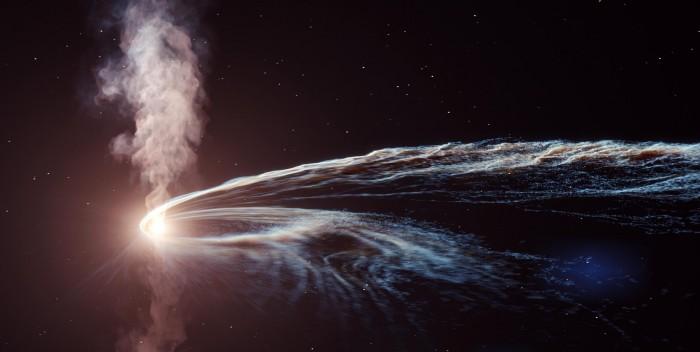New calculations suggest that a black hole devouring a star may not have produced enough energy to emit neutrinos. In October 2019, a high-energy neutrino crashed into Antarctica. This apparently difficult neutrino has piqued the interest of astronomers: What makes such a powerful particle? The researchers traced neutrinos back to a supermassive black hole that had just torn apart and swallowed a star.
AT2019dsg, known as a Tidal Disruption Event (TDE), occurred only a few months ago — April 2019 — in the same region of the sky where neutrinos were produced. Astronomers say this deformed violence must have been the source of this powerful particle. But new research calls into question that claim.

In a study published in the Astrophysical Journal, researchers at Harvard's Center for Astrophysics and the Smithsonian Institution, as well as Northwestern University, presented a flood of new radio observations and data on AT2019dsg, allowing the team to calculate the energy emitted by the event. The findings show that AT2019dsg produces far less energy than neutrinos need; in fact, the energy it spews out is rather "ordinary," the team concluded.
Black holes are "chaotic diners"
While this may seem counterintuitive, black holes don't always swallow everything. Ivet Zendes, a postdoc at the Center for Astrophysics who led the study, said: "Black holes are not like vacuum cleaners. He explained that when a star gets too close to a black hole, gravity begins to elongate, or deform, the star. Eventually, the elongated material swirls around the black hole and heats up, forming a flash of light in the sky that astronomers can spot millions of light-years away.
"But when there's too much matter, a black hole can't eat it all at once," said study co-author Kate-Alexander, a postdoc at Northwestern University, who calls the black hole a "chaotic foodie." "In the process, some of the gas is re-squirted out — just like when a baby eats, some of the food ends up on the floor or on the wall."
These "leftovers" are thrown back into space in the form of outflows or jets — if strong enough, could theoretically produce a subatomic particle called a neutrino.
Using the Supermaturity Array in New Mexico and the Atacama Large Millimeter/Submillimeter Array (ALMA) in Chile, the team was able to make observations of AT2019dsg, which are about 750 million light-years away, more than 500 days after the black hole began to devour stars. Extensive radio observations made AT2019dsg the most well-studied TDE to date and found that radio brightness peaked around 200 days after the event began.
According to these data, the total amount of energy flowing out is equivalent to the energy radiated by the sun over a period of 30 million years. While this sounds impressive, the powerful neutrinos discovered on October 1, 2019 require a source 1,000 times more energetic.
Cendes added: "If this neutrino somehow comes from AT2019dsg, that raises a question. Why haven't we found neutrinos associated with supernovae at this distance or closer? They are more common and have the same energy velocity. "
The team concluded that neutrinos are unlikely to come from this particular TDE. However, if it does, astronomers are far from understanding TDEs and how they emit neutrinos.